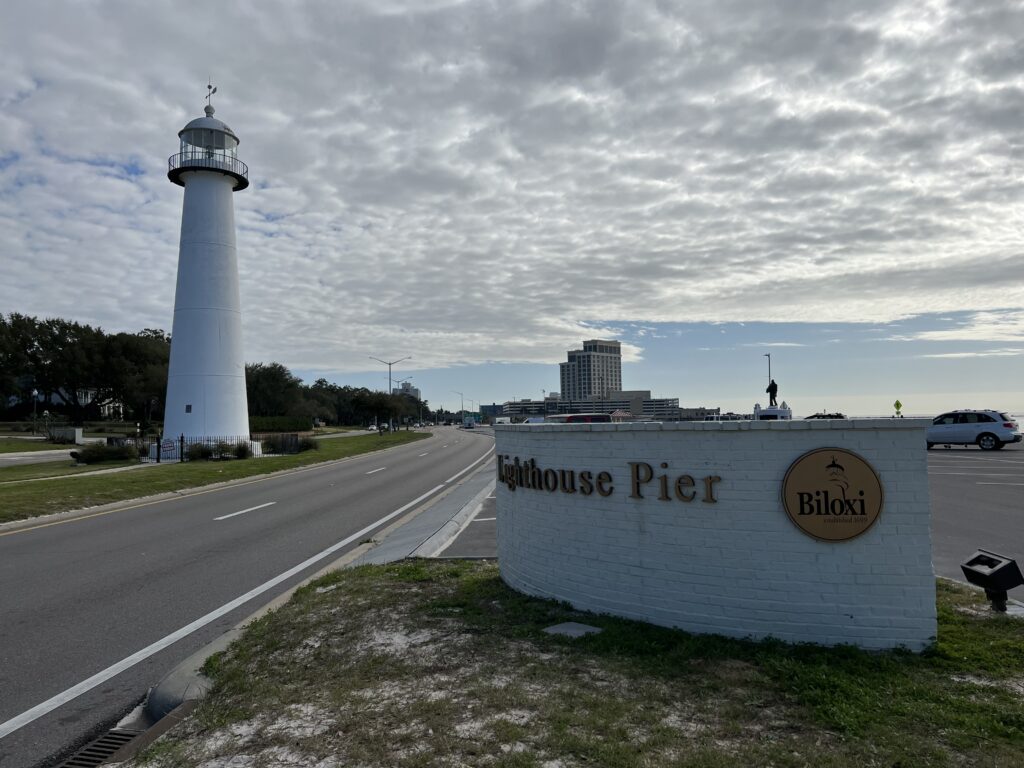First published by The Journal Gazette
I was invited by a friend to join his long weekend gambling trip to Biloxi, Mississippi. I had never been there before, so I thought, “Why not?”
We flew direct from Fort Wayne to Biloxi on the ultra-low-cost carrier Sun Country Airlines. The flight was filled with people eager to go into casinos to hear carnival-like sounds, see flashing lights, play table games and pull slot handles. But as I discovered, Biloxi is more than a small city with flashy casinos; it’s filled with enormous charm and history with beautiful beaches.
A little more than 30 years ago, Biloxi jumped on the bandwagon with other struggling cities to legalize gambling in hopes of turning things around. The dream of developing and building out Biloxi’s shoreline was enough to snap the tight Bible Belt that was around this conservative southern city.
The Beau Rivage Resort & Casino parking garage sits next to the Interstate 110 Loop Walk boardwalk entrance. The boardwalk loops under the freeway and then runs along the beach.
I enjoyed my quiet morning walk as I could hear soft waves, smell saltwater and feel the sun’s rays. But I couldn’t turn a blind eye to a man under the overpass in his dirty sleeping bag surrounded by medium-sized plastic bags stuffed with clothes. His moment was broken, yet mine was peaceful. It was a reminder that life is not the same for everyone.
I continued to walk to the Biloxi Lighthouse. It was erected in 1848. It sits sandwiched between two roads, and the interior is open in the morning from 9 to 10 for $5.
Inside the lighthouse, there are marks on the wall that show the water level for each major storm that hit that area since the lighthouse was erected. The years 1852, 1866 and 1893 appear on the bottom line, and the devastating Hurricane Katrina of 2005 appears at the top.
Across the street from the Biloxi Lighthouse is the Biloxi Visitors Center. It’s a large white two-story historic home with a huge second-floor balcony. Inside are artifacts and information about the area’s history.
Next, I walked to the famous Fill-Up with Billups restaurant, where I sat at the last open seat at the bar. Seats are first come, first served and there was a 20-minute wait for a table. I ordered a la carte, and I enjoyed the tasty crispy bacon, ham and sausage. The number of people waiting for seating continued to grow and it became too busy, so I asked for my check when I got my food.
After eating, I walked to downtown Biloxi. During the past couple of decades, Biloxi’s historic downtown has undergone a transformation from a district filled with empty and dilapidated buildings to a revitalized area filled with art shops, small bars and coffee shops.
Gallery 782 Co-Art sits at Jackson and G.E. Ohr streets where an office once stood. On the side of the building, “Local Arts and Gifts” is painted blue with a flower mural below. Inside this lovely art shop, there are rooms filled with reasonably priced pictures, jewelry and sculptures by local artists.
Around the corner is the famous Mary Mahoney’s Old French House Restaurant. It serves fresh seafood and is known for its romantic courtyard.
I took a ride-share service to the Maritime & Seafood Industry Museum. This three-floor museum is filled with exhibits of the area’s history of boat making, seafood industries and major weather events.
I later took a ride-share across Biloxi Bay Bridge to Ocean Springs. I walked the historic downtown and ate at Murky Waters BBQ. I sat outside in its covered patio and enjoyed its famous spicy BBQ smoked wings. I couldn’t tell if my sweat was from the delicious wings or the hot and humid day.
Then I went to the Walter Anderson Museum of Art. I enjoyed seeing pictures of the area’s landscapes and animals. The museum is dedicated to three brothers who captured the area’s beauty in their art.
I had a great time in Biloxi, but I would recommend a longer trip and renting a car in order to see the other nearby popular cities of New Orleans, about a two-hour drive west, and Mobile, Alabama, about an hour drive northeast.

